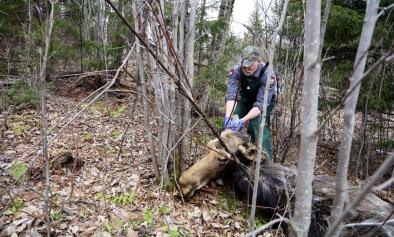Half of All Species Are on the Move—And We're Feeling It

The shrubs probably responded first. In the 19th century, alder and flowering willows in the Alaskan Arctic stood no taller than a small child—just a little over three feet. But as temperatures warmed with fossil fuel emissions, and growing seasons lengthened, the shrubs multiplied and prospered. Today many stand over six feet.
Bigger shrubs drew moose, which rarely crossed the Brooks Range before the 20th century.
...
That's just one of thousands of ways in which human-caused climate change is altering life for plants and animals, and in the process having direct and sometimes profound impacts on humans. As the planet warms, species are shifting where, when, and how they thrive. They are moving up slopes and toward the poles. That is already altering what people can eat; sparking new disease risks; upending key industries; and changing how entire cultures use the land and sea.
...
The changes already are quite dramatic. Malaria, for example, now appears higher up mountain slopes in Colombia and Ethiopia, as rising thermostats make way for mosquitoes at higher elevations. Leishmaniasis, a sometimes-fatal, once primarily tropical affliction, has moved into northern Texas as the sandflies that host the disease-causing parasite head north.
...
A tally of more than 4,000 species from around the world shows that roughly half are on the move. The ones on land are moving an average of more than 10 miles per decade, while marine species are moving four times faster. Some individual species are moving far more quickly. Atlantic cod and Europe's purple emperor butterfly, according to Camille Parmesan, a scientist at Plymouth University in the United Kingdom, moved more than 125 miles in a single decade.
Warming is also shifting the timing of biological cycles. Globally, frogs and other amphibians are breeding an average of eight days earlier with each passing decade, while birds and butterflies are reproducing four days earlier.
...
In California, some mountain plants, such as hemlock, are actually moving downhill, toward warmer temperatures, as climate shifts bring more precipitation to once dry valleys.
Related Content



